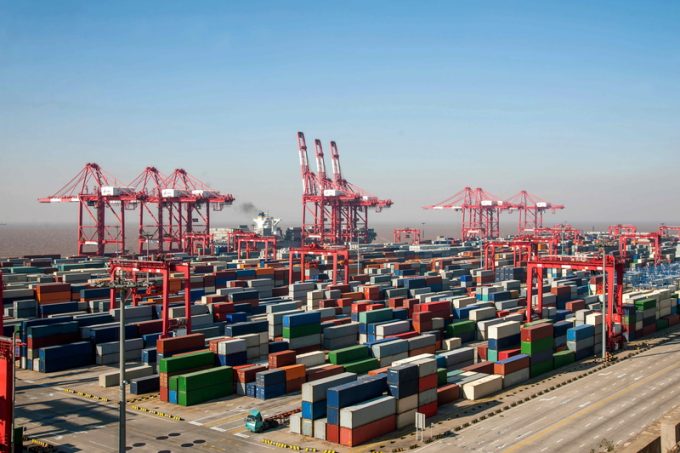Container spot rates have peaked as all major trades see prices fall
There was more evidence in this week’s container port freight markets that peak prices on ...
TFII: SOLID AS USUALMAERSK: WEAKENINGF: FALLING OFF A CLIFFAAPL: 'BOTTLENECK IN MAINLAND CHINA'AAPL: CHINA TRENDSDHL: GROWTH CAPEXR: ANOTHER SOLID DELIVERYMFT: HERE COMES THE FALLDSV: LOOK AT SCHENKER PERFORMANCEUPS: A WAVE OF DOWNGRADES DSV: BARGAIN BINKNX: EARNINGS OUTODFL: RISING AND FALLING AND THEN RISING
TFII: SOLID AS USUALMAERSK: WEAKENINGF: FALLING OFF A CLIFFAAPL: 'BOTTLENECK IN MAINLAND CHINA'AAPL: CHINA TRENDSDHL: GROWTH CAPEXR: ANOTHER SOLID DELIVERYMFT: HERE COMES THE FALLDSV: LOOK AT SCHENKER PERFORMANCEUPS: A WAVE OF DOWNGRADES DSV: BARGAIN BINKNX: EARNINGS OUTODFL: RISING AND FALLING AND THEN RISING

The Shanghai Containerized Freight Index (SCFI), published today after a break for the Chinese Golden Week holiday, reveals a sharp contrast in fortunes for the major carriers.
The decision by Asia-North Europe carriers to blank or suspend 11 headhaul voyages this month appears to have halted the slide in spot rates on the route, the SCFI component virtually unchanged at $731 per teu.
However, if the 2M Alliance reactivates its AE2/Swan loop earlier than planned – on 5 December as suggested by Alphaliner – then spot rates could fall away quickly.
When the loop was suspended at the end of last month, MSC said the Swan service might be resumed “towards the end of the year”, while Maersk told customers its AE2 service would “resume in line with demand pickup”, which it expected to be before Chinese New Year in February.
If, however, Alphaliner is correct and the loop is reinstated in early December, during the weakest demand period in the cycle, then 11 18,300-20,600 teu ULCVs will be back in the market, hunting for cargo.
Shippers The Loadstar spoke to since the Alphaliner report was released believed the 2M partners could not accept the loss of market share that would follow this month’s industry-wide voyage blankings and that MSC in particular had pushed for an earlier-than-planned service resumption.
Meanwhile, for Mediterranean ports, there was a fall of 2.1% in the SCFI, compared with 28 September, to $751 per teu.
Compared with a year ago, spot rates are higher on both trades: the SCFI on 13 October 2017 recorded rates of $686 and $652 per teu respectively for North Europe and the Mediterranean.
However, carriers are paying around 40% more for their fuel than last year, which explains the parlous financial position they find themselves in.
The container lines would normally look to begin new annual contract rate negotiations for the trade in a few weeks, by which time they need to have stability in the spot market.
Meanwhile, on the transpacific, the rush to beat the hike in tariffs on $200bn worth of Chinese imports from 10% to 25% from 1 January is artificially boosting demand for space. Spot rates between Asia and the US have soared and are now almost double the level of a year ago.
Rates to the US west coast as recorded by the SCFI jumped a further 7.3% this week to $2,503 per 40ft, while east coast rates were static at $3,304 per 40ft, due to the extended transit times.
Realistically, transpacific shippers that can front load more cargo only have a few more weeks to beat the duty increase, which suggests that volumes could drop significantly from December.
The Trump administration has said that the staged increase in tariffs from 10% on 24 September, to 25% on 1 January, is to allow time for US companies that depend on the Chinese imports covered by the trade war duty hikes to shift their supply chains.
Comment on this article